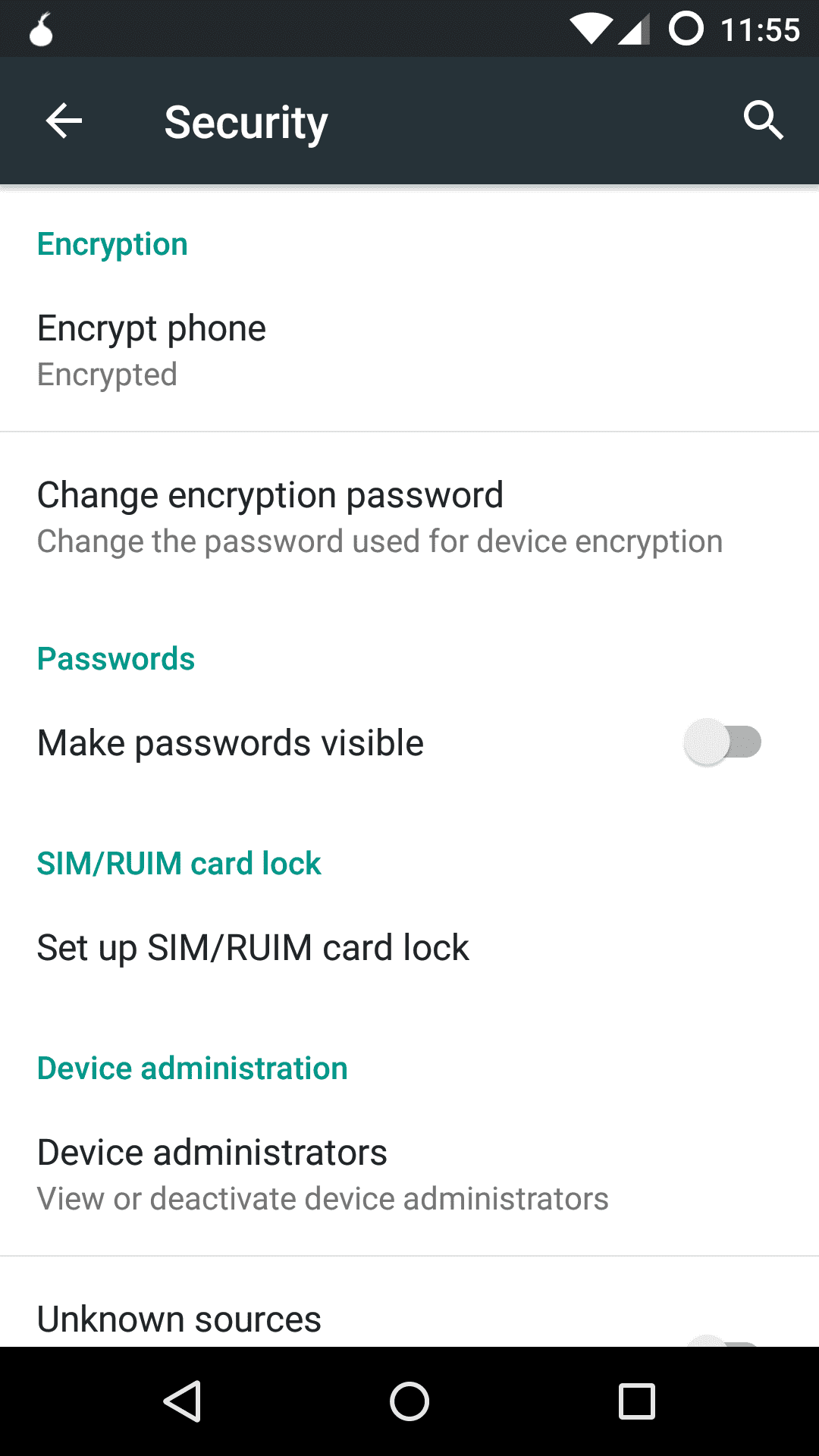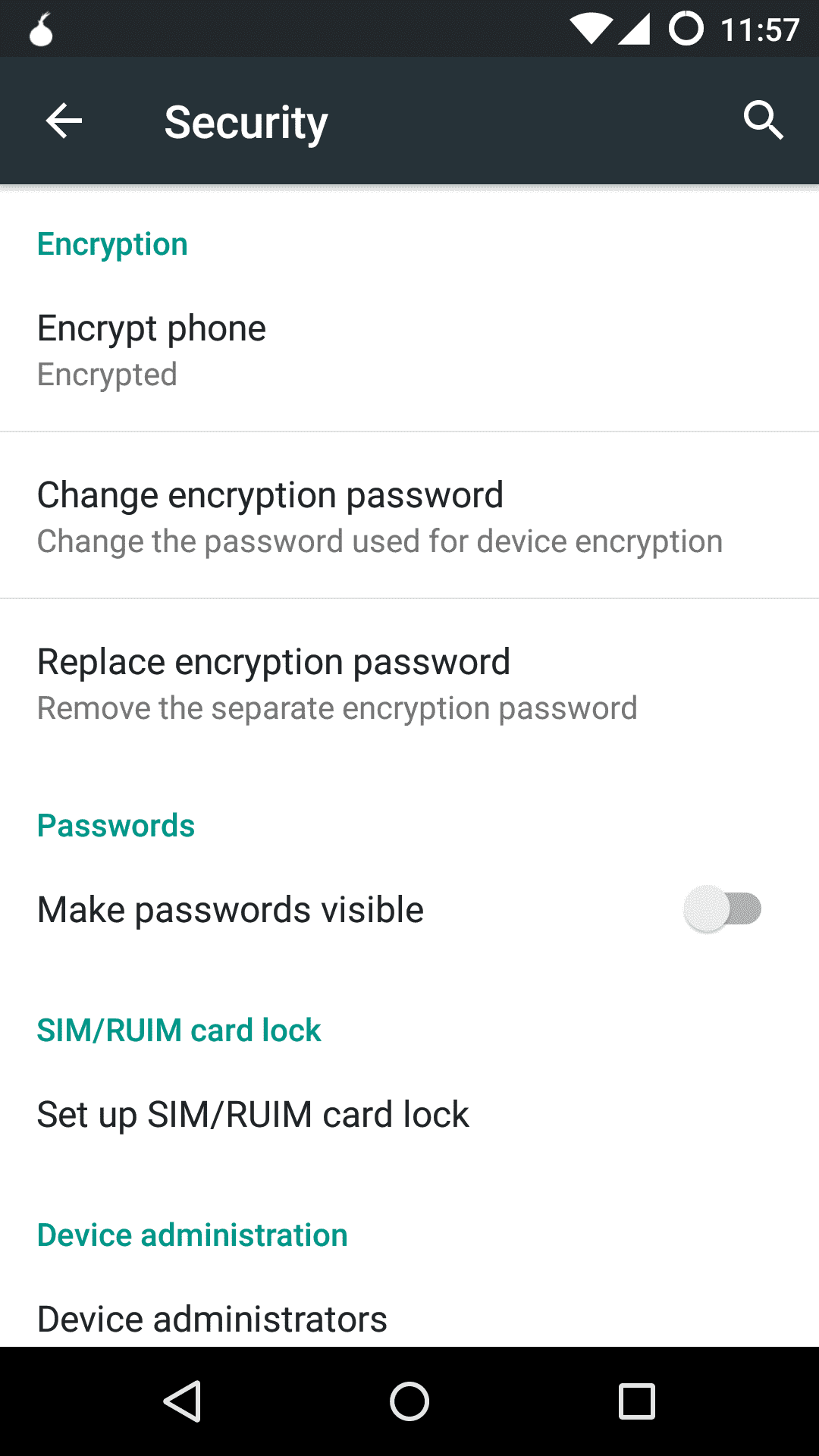A long-standing weakness in Android's encryption support
Android has a robust implementation of encryption for the data partition where all system/user data is stored. It's also quite convenient as it can be enabled out of the box by the operating system. It becomes useful as soon as a lockscreen password is set.
The feature falls short for users actively seeking to secure their device as it's inherently tied to the lockscreen password. By default, the screen will be locked after 5 seconds of sleep so it's too inconvenient to set a complex password. A smartphone's user experience is quite different when sending a text message or glancing at a map requires typing a 26 character passphrase with capitals, numbers and symbols on a tiny touch keyboard.
There are apps for setting a separate passphrase on rooted devices but it will be overwritten when the lockscreen password is changed. CopperheadOS includes first-class support for a separate encryption password without losing the convenience and out of the box security from initially having it tied to the lockscreen password.
Backend changes
The low-level changes to support this feature are straightforward and have been submitted upstream (but not yet reviewed). A lock_separate_encryption_password setting tracks whether the encryption password is split from the lockscreen password. The code paths for setting lockscreen passwords/pins/patterns conditionally update the encryption password based on the setting rather than doing it unconditionally. There are also simple public methods for checking if it is set, setting/changing the split password and replacing it by tying it back to the lockscreen password.
Frontend UI
The feature is exposed in the Security settings menu in the Settings app.
There's a new menu entry shown in the Encryption section if the data partition is encrypted for setting a separate encryption password. It's simply based on the existing password/pin/pattern entry widgets.

While implementing this, I discovered a bug with the existing widgets allowing the initial password confirmation to be skipped via cancellation. It's not a big deal because confirming the password at all is not strictly necessary and it's not the usual code path taken by the Settings app. It would be nice if there was more code reuse so issues wouldn't need to be fixed in 3 places (4 in CyanogenMod and now 5 in CopperheadOS; out-of-tree refactors would be a bad idea).
Once the separate encryption password is in place, a second menu entry appears for replacing it with the lockscreen password. Thankfully, this just requires a bit of glue code.

Preventing brute-forcing
Permitting a strong encryption password without losing convenience is a nice improvement but a weak pin is still a liability without some form of brute force protection. CopperheadOS will likely just force a reboot after N (perhaps 5) failed attempts to force the entry of a stronger encryption password. This will be enabled by default if a separate encryption password is set. Wiping the data partition would be extreme and doesn't offer stronger guarantees than a reboot as the attacker can just reboot it themselves.
